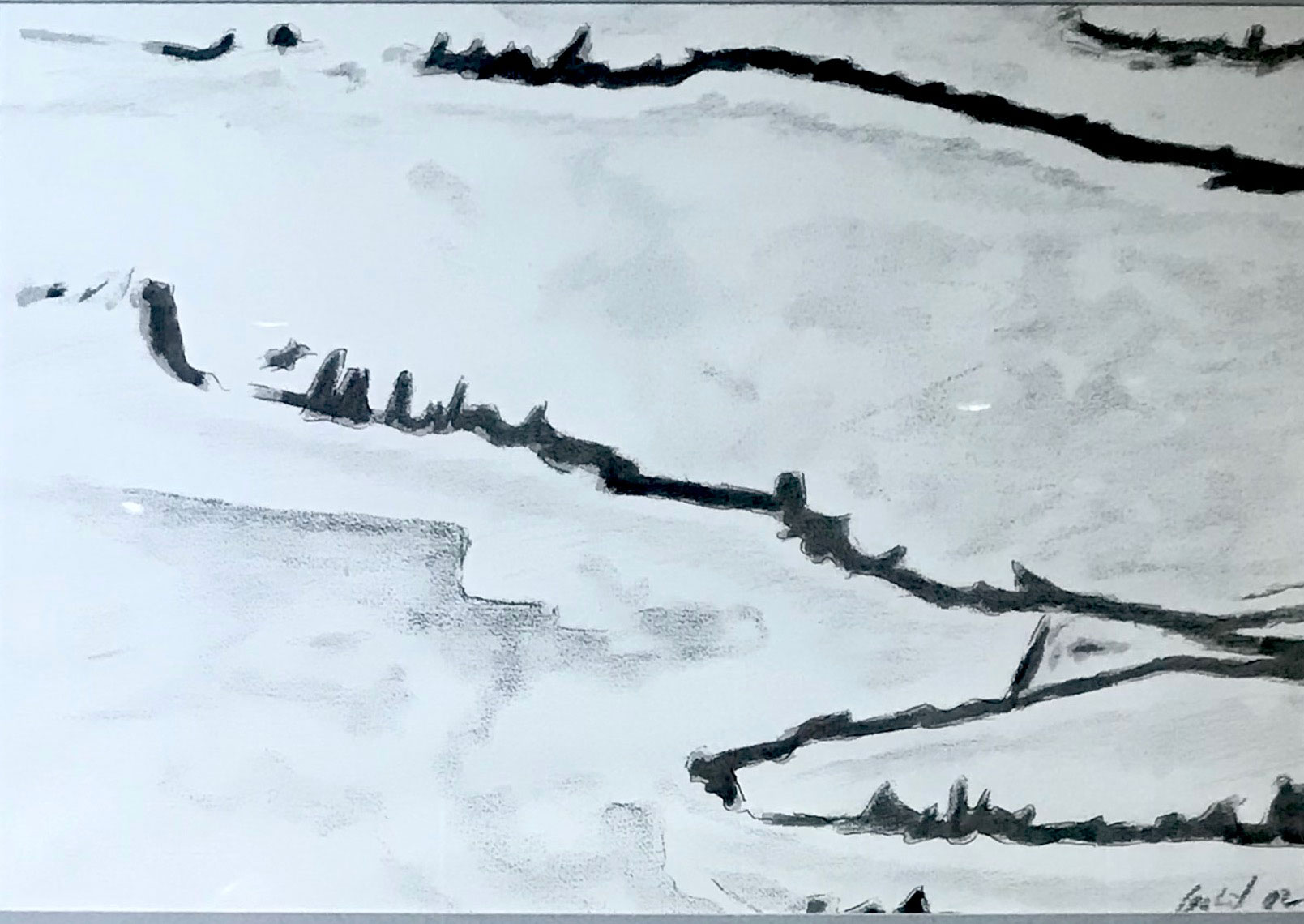- Apply
- Visit
- Request Info
- Give
Published on March 07, 2022
Gabriel Warren
As much scientist as artist Warren’s works are based upon the cataclysmic forces of nature. Intensely engaged in the study of his subject, Warren begins his creative process through the act of drawing. Before setting fire to metal, he first interprets his observations through the bodily translation of marks on paper. It is through that dynamic that the immediacy of those sublimely awesome dynamics of the planet itself are internalized and felt by the artist. One imagines Warren as that primeval force, a cosmic conductor, separating the darkness and the light, the earth from the firmament, as time and energy, ice and fire embrace while continents rise, shift and are ultimately consumed in processes that are as old as the universe itself.
Artist’s Bio
Gabriel Warren is an environmental artist who believes that Art and science should not be the strangers they have been of late, but allies in the quest for comprehension. To that end, he travels extensively to witness first hand his sources, and to interact with scientists.. Prominent among such trips, in 1999 he became the first sculptor from any country to be sent to Antarctica, as winner of the National Science Foundationʼs ʻArtists and Writers in Antarcticaʼ program. In 2001 he journeyed to the high Arctic with the Canadian Coast Guard, and in 2006 he returned to the Antarctic, again courtesy of the National Science Foundation. In 2014 he was a member of a science team on the Greenland Ice Cap from GEUS, the Geological Survey of Greenland and Denmark. He studied at Rhode Island School of Design, Providence, RI (BFA Jan 1978) Tyler School of Art, Rome, Italy, Amherst College, Amherst, MA. He divides his time between Rhode Island and Nova Scotia. In both places he lives in intimate contact with the natural world. His work is in numerous private and public collections in the US and Canada.
Artist’s Statement
These drawings are my initial artistic reactions to my first deployment to the high Arctic, aboard Canada’s largest and strongest icebreaker Louis S. St-Laurent, as fall gave way to winter. I was privileged to witness the process and progress of congelation as the open portions transformed from water to ice, both from shipboard and from her helicopter. As sea water freezes, it goes through stages, each of which has a scientific name; young, salty, flexible ice from 4-10 cm (1.5- 4 in) thickness is called nilas. When older, rigid sea ice masses are driven together by wind or tide, the result is either rafting — one side clearly over the other— or ramparting where ice at the junction is fractured and pushed up into walls. Nilas, on the other hand, develops a lovely over-and-under pattern that could be thought of as weaving: finger rafting. The ‘some for me, some for you’ nature of the intersection has evident metaphorical implications, especially given that this zone, when frozen together, is twice as thick and strong as the original nilas sheets.
To create these pieces, I printed some of my photography on clear acetate in black and white and displayed them on my paper with an overhead projector. This liberated me from the concentration required to lay out the compositions, and allowed me to focus exclusively on the mark making, the core of any drawing. The photos appear here in full; the drawings were made from croppings, or ‘zoomed in’ sections.


